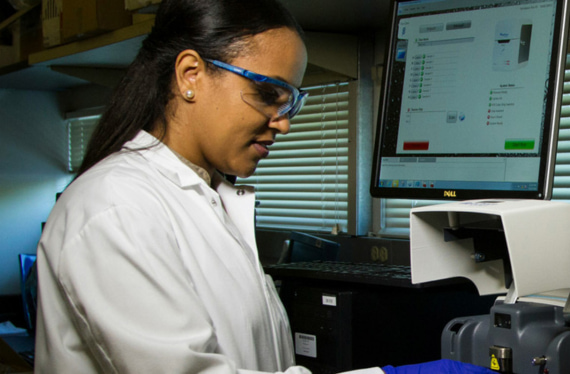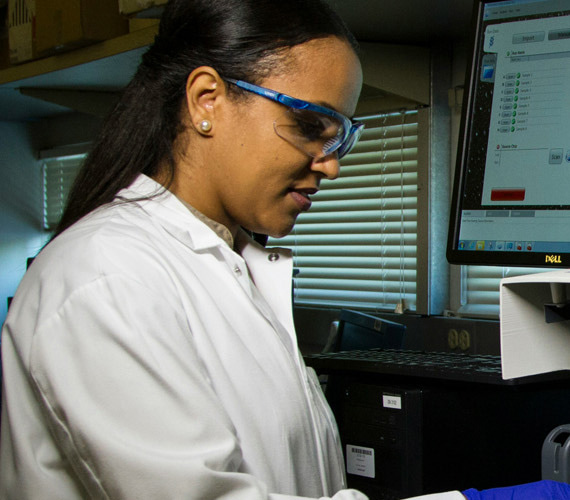Becoming a public health advocate requires an understanding of the evolving challenges influenced by globalization, technological advancements, and policy shifts. Therefore, staying up to date on the latest trends is essential to your effectiveness in the field.
If you’re dedicated to enhancing health outcomes, recognizing and understanding trends in public health is vital. This guide highlights the key trends shaping the field and offers strategies for effectively navigating these challenges.
Top Nine Public Health Trends
1. Data-Driven Decision Making
In recent years, big data has become central to the health industry, revolutionizing how data is collected, managed, analyzed, and utilized. In addition, technological advancements and the rise of HealthTech solutions have enabled health institutions to securely manage vast quantities of data.
This extensive access to data has drastically transformed public health operations, enhancing the ability to make informed decisions and improve outcomes. This is especially true considering the use of electronic health records. In public health, this compilation of data can quickly identify outbreaks, assess population risks, and optimize resource allocation.
This data-driven approach—considering policy, finance, and demographics—is set to become a fundamental aspect of strategic planning and operational decision-making in public health.
2. Digital Health Integration
Despite initial pushback, there’s been an increase in initiatives to integrate digital health into the existing health systems. Most notably, telehealth—delivering healthcare services remotely through digital channels—has become a common alternative to doctors’ visits, especially since the COVID-19 pandemic.
According to an American Medical Association 2022 survey, only 25 percent of physicians reported that telehealth was used in their practice in 2018. This more than tripled to 74 percent in 2022.
This shift is important for many reasons. For one, the prevalence of telehealth has directly addressed the recent nursing shortages and burnout.
“Public health and healthcare is so underfunded,” says Dr. Frazier Beatty, director of the online Master of Public Health program at Regis College. “Professionals in these spaces, like nurses, can really make a difference in their workload and ability to make an impact on more people.”
Telehealth also makes healthcare services available to more underserved communities by offering quick medical advice and care in areas that may not have many medical facilities. This approach is a big step toward more healthcare accessibility throughout the United States.
3. Global Health Security
Another important trend that constantly changes is the political side of healthcare. With so many calls for improving international relations in the world, the current state of global health security—international cooperation to address major public health challenges—has largely remained out of the conversation.
“The World Bank funds countries’ educational systems and their healthcare systems so they can have the technology, information, or infrastructure to be able to do things better,” Beatty says. “But in public health, we don't collaborate well with the World Bank and these different systems to help people. We could do a lot more.”
4. Health Equity
For example, rural areas might lack healthcare facilities, and low-income communities may struggle with insurance coverage.
According to the US Census, an estimated 27.2 million people did not have health insurance at any point during 2021.
Recent efforts in expanding healthcare access to underserved populations have tried to reverse these trends. That same US Census report also found that the number of people without health insurance in 2022 decreased to 25.9 million. However, this trend continues to be a challenge in providing quality healthcare services to underserved populations.
5. Community Empowerment
Community empowerment is an incredibly important trend in public health.
“The key is empowerment,” Beatty says. “You need to go beyond community engagement and give the community the will to drive.”
Some initiatives that share this goal can include:
- Training community health workers to provide localized care
- Enhancing health literacy to enable informed health decisions
- Offering resources to support local health advocacy efforts
By involving communities directly, these strategies can build sustainable health environments and reduce disparities—leading to a significant shift toward more inclusive public health practices.
6. Interdisciplinary Collaboration
Interdisciplinary collaboration focuses on integrating knowledge outside traditional health disciplines—urban planning, economics, and information technology—to address social determinants of health in communities.
“Interdisciplinary collaboration involves merging public health with medical health and treatment with prevention or prevention with the treatment,” Beatty says.
One example of interdisciplinary collaboration in public health is the fight to prevent diabetes.
Public health professionals can support this initiative by educating communities about the dangers of sugar consumption, while medical professionals can warn patients about the impacts of diabetes and how to prevent it. In addition, the accessibility to technology that tracks glucose levels has given communities the knowledge needed to make better lifestyle choices.
With interdisciplinary collaboration, instead of working in silos, these disciplines can share data and best practices to significantly decrease the rate of diabetes in at-risk communities.
7. Mental Health Awareness
Mental health awareness is an important trend in public health. According to Mental Health America, 50 million American adults are experiencing a mental illness.
The increase in mental health issues has had several negative effects on underserved communities, contributing to challenges like the opioid crisis and rising crime rates. However, the decreasing stigma around mental health has led to a new demand for comprehensive mental health services.
According to Forbes, while the percentage of adults receiving treatment increased to nearly 22 percent in 2021, 42 percent can’t afford or have access to treatment in 2023.
As a result, there's also a notable push in public health for integrating mental health education into school curriculums and workplace wellness programs. This ensures resources are both available and affordable to communities throughout the US.
8. Climate Change
Considering the role of environmental effects on public health, it’s no surprise that climate change continues to be an important trend in the field. With things like extreme weather patterns and rising sea levels, some communities are disproportionately impacted by climate change.
For example, there are several parts of the world where agriculture has become increasingly difficult. According to the American Farm Bureau, the total amount of crops lost from major 2022 disasters was worth over $21.4 billion. To address these losses at the hands of climate change, public health is trying to push for adaptability.
“Through education on sustainability approaches in agriculture, we can do things like grow crops in areas we normally could not,” Beatty says. “It’s a long process, but we’re trying to educate people so they're more aware of how to respond to these climate change effects.”
9. Health Policy Reform
Public health policy refers to actions that promote health and prevent disease across populations through government regulations and initiatives. With so many health trends still negatively impacting underserved communities, there has been a push for reform to improve things like disease prevention and health equity.
One example of public health policy reform is the Affordable Care Act (ACA), which was enacted during the Obama Administration. This public health policy extended affordable health insurance coverage to more of the population. It did this by lowering the cost of health insurance, which in turn increased access to preventive care services, including screenings for conditions like breast cancer.
Become Part of the Change
The world's always changing. So it's important to keep innovating, adapting, and taking proactive steps in public health. As someone working in this field, keeping up with the latest trends is crucial not just for your career in public health but also for making a difference in your community.
Regis’s MPH (Master of Public Health) program sets you on the right course, covering all of the top trends discussed above. In the program, you’ll get to explore things like environmental health, health education, mental health, and how you can solve today’s complex challenges in your community.




